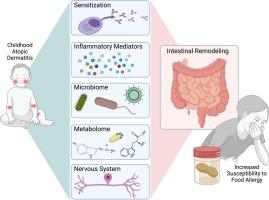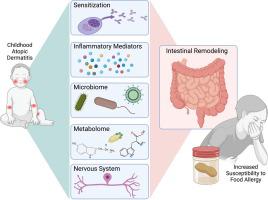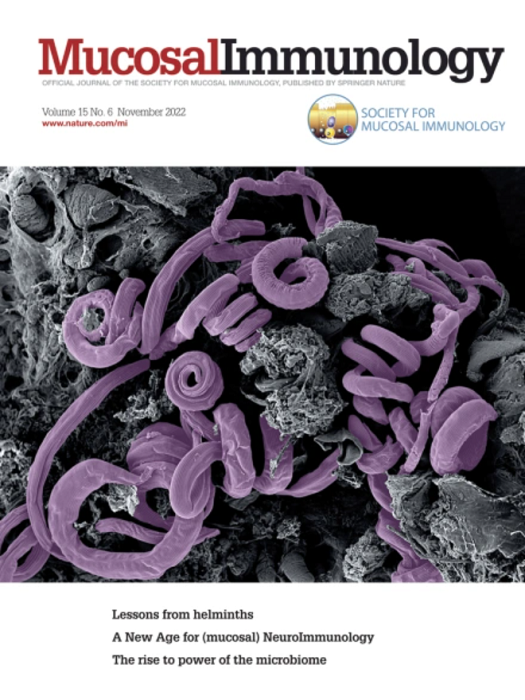特应性皮炎与食物过敏:不仅仅是过敏。
IF 7.9
2区 医学
Q1 IMMUNOLOGY
引用次数: 0
摘要
患有特应性皮炎的婴儿发生食物过敏的风险增加早已得到公认;这种流行病学现象被称为 "特应性进展"。目前的文献支持这样一种假设,即特应性皮炎患者通过破坏皮肤屏障接触食物抗原会导致食物抗原特异性 IgE 的产生和食物过敏。然而,越来越多的证据表明,皮肤炎症会通过循环炎症信号、微生物组改变、代谢物和神经系统驱动肠道重塑。我们将探讨皮肤-肠道轴如何帮助解释特应性皮炎与食物过敏之间的联系,而不仅仅是过敏。本文章由计算机程序翻译,如有差异,请以英文原文为准。


Atopic dermatitis and food allergy: More than sensitization
The increased risk of food allergy in infants with atopic dermatitis (AD) has long been recognized; an epidemiologic phenomenon termed “the atopic march.” Current literature supports the hypothesis that food antigen exposure through the disrupted skin barrier in AD leads to food antigen-specific immunoglobulin E production and food sensitization. However, there is growing evidence that inflammation in the skin drives intestinal remodeling via circulating inflammatory signals, microbiome alterations, metabolites, and the nervous system. We explore how this skin-gut axis helps to explain the link between AD and food allergy beyond sensitization.
求助全文
通过发布文献求助,成功后即可免费获取论文全文。
去求助
来源期刊

Mucosal Immunology
医学-免疫学
CiteScore
16.60
自引率
3.80%
发文量
100
审稿时长
12 days
期刊介绍:
Mucosal Immunology, the official publication of the Society of Mucosal Immunology (SMI), serves as a forum for both basic and clinical scientists to discuss immunity and inflammation involving mucosal tissues. It covers gastrointestinal, pulmonary, nasopharyngeal, oral, ocular, and genitourinary immunology through original research articles, scholarly reviews, commentaries, editorials, and letters. The journal gives equal consideration to basic, translational, and clinical studies and also serves as a primary communication channel for the SMI governing board and its members, featuring society news, meeting announcements, policy discussions, and job/training opportunities advertisements.
 求助内容:
求助内容: 应助结果提醒方式:
应助结果提醒方式:


